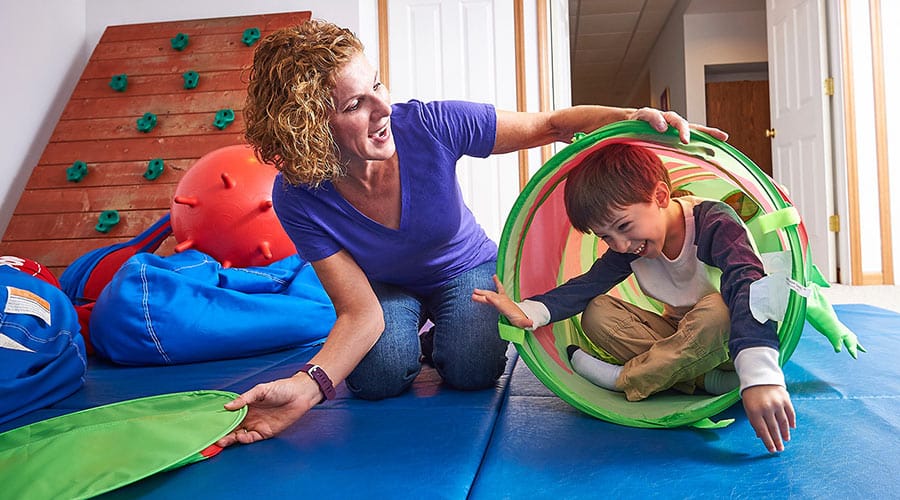Introduction
In today’s fast-paced world, ensuring your child’s optimal development is essential. If your child seems to experience sensory overload or has difficulty with everyday tasks, it might be worth considering if they have a sensory processing disorder (SPD). SPD can affect various aspects of a child’s life, from motor skills to behavioral responses.
This article explores the SPD test, designed to provide an accurate speed testing method for your child’s sensory processing capabilities.
Success Stories
“Move Up ABA has been a lifeline for our family. Before starting therapy, our son struggled with daily routines and communication. Now, he’s more independent and even initiated a conversation with a classmate for the first time! The progress we’ve seen in just six months is truly remarkable.”
- Emily R., Silver Spring, Accountant
“As a single dad, I was overwhelmed trying to manage my child’s behavior. The Move Up ABA team not only provided amazing support for my little girl but also taught me practical strategies to use at home. Their in-home sessions fit perfectly with our busy schedule. I’m so grateful for their patience and expertise.”
- Michael T., Rockville, Middle School Teacher
“We were hesitant about starting ABA therapy, but Move Up ABA’s approach put us at ease from day one. Our twins have made incredible strides in their social skills and self-regulation. The therapists are like extended family now, and we couldn’t be happier with our decision to work with them.”
- Aisha and James L., Simpson, Police Officers
Ready to start your child's journey to success? Schedule a free consultation today! 📞 Call (410) 497-8865.
What is Sensory Processing Disorder?
Sensory processing disorder (SPD) is a condition where the brain has difficulty interpreting sensory messages. This can result in hypersensitivity or hyposensitivity to sensory stimuli like loud noises, bright lights, or certain textures. Studies show that approximately 5-16% of children may be affected by SPD, making it an important condition to identify early.
Sensory Processing Disorder Test
The Sensory Processing Disorder (SPD) test helps determine how a child’s brain processes sensory information. It evaluates responses to stimuli such as touch, sound, and movement to identify any processing challenges. Administered by professionals, the test includes observational assessments and questionnaires from parents or caregivers to gain insights into the child’s daily behavior.
The test pinpoints difficulties, allowing for a customized plan to help the child better manage sensory differences and interact with their environment. Early diagnosis and suitable interventions can greatly improve outcomes for children with SPD, making the test vital for their development and quality of life.
Recognizing Symptoms of Sensory Processing Disorder
Children sensory processing disorder (SPD) might exhibit a range of symptoms, making it essential to observe and understand their behavior. Some common SPD symptoms include poor balance, motor challenges, and hypersensitivity to sensory input, such as strong odors or itchy tags on clothing. These child’s challenging behavior might also struggle with everyday tasks like tying shoelaces or using playground equipment, which involve complex motor tasks.
In other cases, children might be overly sensitive to sensory stimuli, such as loud noises or bright lights, which can overwhelm everyday life. They may crave specific sensory inputs, leading to sensory seeking behavior, or alternatively, they might avoid certain environments due to sensory overload. Recognizing these behaviors is the first step in seeking appropriate help.
How SPD Affects Everyday Life
For children with SPD, everyday life can be a series of overwhelming experiences. Many children feel upset consistently when faced with sensory input that their nervous system cannot process correctly. This can lead to challenging behaviors, such as temper tantrums, that are often misunderstood as misbehavior, rather than a response to sensory overload.
The inability to process sensory messages can disrupt motor tasks and affect a child’s ability to concentrate. In a busy school hallway, for example, distracting noises and crowded spaces can be particularly overwhelming for a child with SPD. Understanding these environments’ sensory challenges is crucial for providing the necessary support.
The Role of Sensory Integration Therapy

Sensory integration therapy is a common intervention, especially for children with SPD. This therapy focuses on improving the body’s ability to process sensory information by providing appropriate pressure and stimulation in a controlled setting. Typically, an occupational therapist leads this therapy, guiding children through activities so they can interpret sensory messages more effectively.
Occupational therapy can be beneficial for children experiencing sensory processing challenges. Through sensory integration, children can learn to manage their sensory issues better, improving their motor skills and overall capability to perform everyday tasks. This therapy aims to enable children to handle sensory stimuli without becoming overwhelmed.
SPD and Its Co-Existing Conditions
SPD often coexists with other conditions, such as autism spectrum disorder and attention deficit hyperactivity disorder (ADHD). Understanding the overlap between these conditions is vital in providing a comprehensive approach to treatment. Children with ADHD hyperactivity, for instance, may also exhibit sensory seeking behaviors, while those on the autism spectrum might face different sensory challenges.
Achieving an accurate diagnosis requires a thorough understanding of these overlapping symptoms. A proper diagnosis ensures that the child receives the most effective treatment plan tailored to their needs, addressing both the sensory processing disorder (SPD) and any co-existing conditions.
The SPD Test and Accurate Diagnosis
The sensory processing disorder test is a valuable tool in diagnosing sensory processing disorder. It involves a series of assessments designed to evaluate how a child processes sensory information. These tests help identify specific areas of difficulty, providing insight into the child’s sensory profile and guiding the diagnosis process.
An accurate diagnosis is crucial in developing an effective intervention plan. Through the sensory processing disorder (SPD) test, specialists can better understand the child’s unique needs and tailor therapy to address specific challenges. This personalized approach enhances the child’s ability to cope with sensory overload and improve overall functioning.
Supporting Children with Sensory Processing Issues

Supporting a child with sensory processing issues involves creating an environment tailored to their needs. For instance, reducing background noise can help them focus better. Additionally, offering specific foods that are easier to chew may make mealtimes more comfortable. Furthermore, avoiding strong odors and overly stimulating environments can prevent sensory overload. By understanding and addressing these needs, you can significantly improve a child’s experience both at home and in educational settings.
Parents and caregivers play a crucial role in helping children manage their sensory processing disorders. By providing a supportive environment and seeking professional guidance, they can help their child develop strategies to handle sensory input more effectively, leading to a more fulfilling and less overwhelming everyday life.
Navigating Sensory Processing Challenges in Schools
Schools can be particularly challenging for children with SPD due to the variety of sensory stimuli present. Teachers and school staff must be aware of the challenges these children face and work to create a supportive classroom environment. This might include allowing the use of sensory tools, such as noise-canceling headphones, or providing breaks for children who experience occasional sensory overload.
Collaboration between parents, teachers, and occupational therapists is essential because it helps develop strategies that enable children to succeed both academically and socially. By understanding each child’s unique sensory needs, schools can, therefore, provide an inclusive environment that supports all students.
The Importance of Early Intervention
Early intervention is key in managing sensory processing disorders effectively. The sooner a child receives an accurate diagnosis and begins sensory integration therapy, the better their outcomes are likely to be. Early support can help children develop the skills they need to interpret sensory messages and manage their responses to sensory stimuli.
If parents suspect their child might have SPD, they should therefore seek an evaluation from a qualified occupational therapist. This professional can, consequently, conduct a thorough assessment and recommend interventions that address the child’s specific sensory processing challenges.
Building a Community for Families with SPD
Families dealing with sensory processing disorder can benefit from connecting with others facing similar challenges. Support groups and online communities offer a platform for sharing experiences, tips, and resources. These networks provide valuable support and insight, helping families feel less isolated and more empowered to advocate for their children’s needs.
Joining a community helps parents learn about the latest sensory processing disorder research and therapies, aiding in informed care decisions.
Moving Forward with Confidence
Understanding sensory processing disorder and its impact on children is crucial for parents, educators, and healthcare professionals. With the right support and interventions, children with SPD can overcome sensory processing challenges and thrive in everyday life. By fostering an environment that respects and accommodates their unique needs, we can help them reach their full potential.
Conclusion
Navigating the complexities of Sensory Processing Disorder (SPD) Test requires a concerted effort from parents, educators, and healthcare professionals. By gaining a thorough understanding of SPD and actively working to provide accommodating environments, we nurture the opportunity for affected children to reach their fullest potential. Early intervention, personalized support strategies, and community connections play pivotal roles in this journey.






